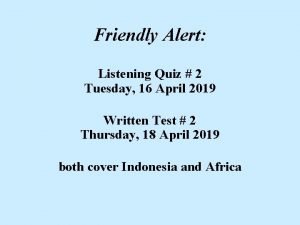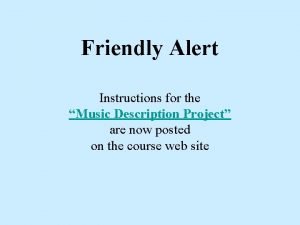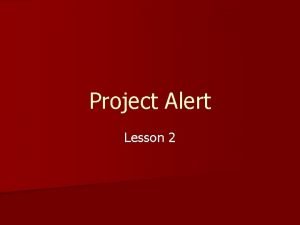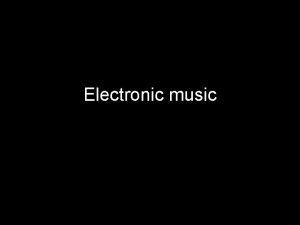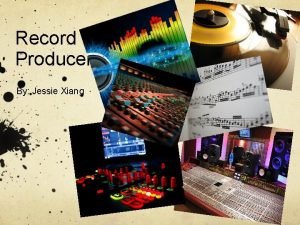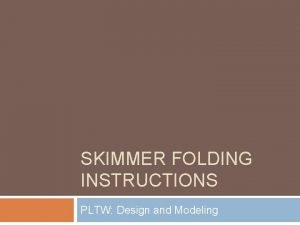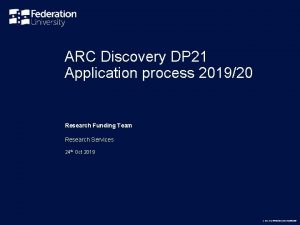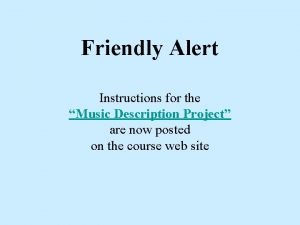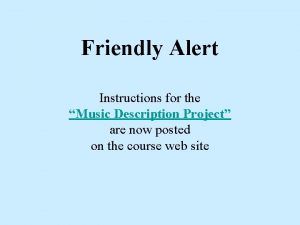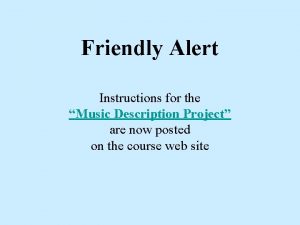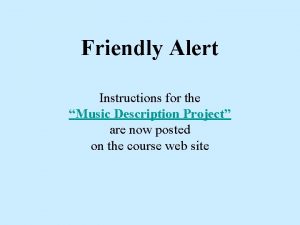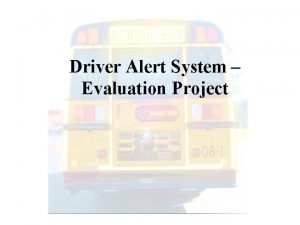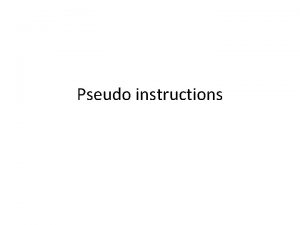Friendly Alert Instructions for the Music Description Project












- Slides: 12

Friendly Alert Instructions for the “Music Description Project” are now posted on the course web site DUE: TODAY, MONDAY, 2 March 2020

Friendly Alert #2 Test # 1: WEDNESDAY, 4 March 2020 (Two DAYS from today) During regular class time Covers chapters 1 – 8 (See Review Sheets for Details)

Friendly Alert # 3 Listening Quiz # 1 Friday, 6 March 2020 (five days from today) During Regular class Time May include any LG Item from Chapters 1 through 8

Chapter Eight “After the Ball” : Band Music, Gospel Hymns, and Popular songs after the Civil War

Sheet Music • 1 st “mega-hit” • Charles K. Harris (1892) • J Aldrich Libby sang in A Trip to Chinatown • Verse (tells the story) • Chorus (repeats exactly) • Examples (LG. 8. 3) - Charles K. Harris - After the Ball – You. Tube (c. 1920 s) - After The Ball - Morris & Bolcom - After The Ball - Gaskin (1893) (LG)

Tin Pan Alley Songs • “The Bowery” by Gaunt & Hoyt - A Trip to Chinatown (1891) • “Sweet Rosie O'Grady” by Maude Nugent - vaudeville performer (1896) • “On the Banks of the Wabash, Far Away” by Paul Dresser (1897) – 2 nd highest selling in 19 th C? • “A Bird in a Gilded Cage” by Lamb & Von Tilzer (1900) – 2 million copies sold (1900) • “My Gal Sal” by Paul Dresser (1905) - best known song; new attitude (toward relationships) and modern sound

TEST # 1 Materials END Here Nothing after this slide will be used on Test # 1 (4 March 2020)

Chapter Nine “To Stretch Our Ears” : Classical Music Comes of Age

Theodore Thomas (1835 -1905) • German Immigrant • Violinist in NYC • Theodore Thomas Orchestra - Summer concerts (1864) - touring in US • To Chicago Symphony (1891) - “I would go to hell if they gave me a permanent orchestra” • “…to make good music popular” - belief in the importance of the orchestra - civic pride (orchestra = cultural emblem) - financial support (beyond ticket sales)

Second New England School • • • Group of Boston – New York composers Post-Civil War era (1865 -1910+) Classical / Art Music European trained (eithere or here) Established modern US art music infrastructure “Second” NE School – came after the “First” group of NE Psalmody composers (Billings, et al. )

John Knowles Paine (1839 -1906) • • • Musical family (organists in Maine) Study in Europe (Berlin) Harvard – 1 st Professor of Music in US Board of New England Conservatory Widely influential – many colleagues George Whitfield Chadwick (1854 -1931) • • Self-taught and “special” NEC student Study in Leipzig and Munich Director of New England Cons. (1897 -1931) Influential teacher – H. Parker, W. G. Still, A. Whiting, F. Converse, F. Price, et al.

Arthur Foote (1853 -1937) • Trained entirely in US (NEC & Harvard) - earned 1 st M. A. in Music in US • Organist & founding member of AGO • Teacher & author of theory books • Chamber Music Horatio Parker (1863 -1919) • • • Student of Chadwick in Boston Study in Munich w/ Rheinberger Hora novissima, etc. , - makes his rep in 1890 s Theory Professor and Dean of So. M at Yale U Teacher of Charles Ives

